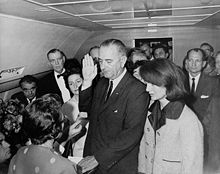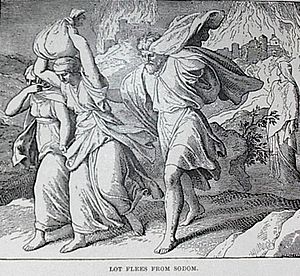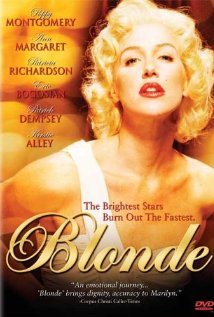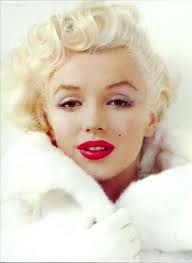The story od Norma Jeane Baker is well documented, her removal to a orphanage at a young age when her solo mother was hospitalised, the refusal of her mother to allow her to be adopted, her life until her marriage at 15 in a foster home, her first marriage, her job building aircraft, her early life as a photographic model, her film career and marriages and death at the age of 36, so I won't repeat thos facts.
On August 5, 1962, LAPD police sergeant Jack Clemmons received a call at 4:25 am from Dr. Ralph Greenson, Monroe's psychiatrist, proclaiming that Monroe was found dead at her home in Brentwood, Los Angeles, California.
In fact, although Marilyn (b. June 1, 1926 ) died at 4:25 am on 5th August 1962, there is speculation that she had an illegitimate child, possibly before her first marriage to James Dougherty at the age of 15 (in 1941).
Dougherty was born in Texas. He was the youngest in a family of four children born to Ethel (née Beatty) and Edward Dougherty, natives of Pueblo, Colorado who moved to Globe, Arizona when he was an infant. Dougherty's grandparents were immigrants from England and Ireland.[1] He attended Van Nuys High School, graduating in 1938 alongside Jane Russell, where he was active in theater and a member of the football team.[2]
Dougherty was married three times. His first marriage was to Marilyn Monroe. While working part-time and living with his parents, Dougherty met Monroe (then known by her birth name of Norma Jeane Baker), when she was 15 and he was 20.[3] They began dating. Monroe's adoptive mother suggested that Dougherty marry Monroe.[4][5] He would later admit to A&E Network that his mother also wanted him to marry her. She graduated from high school in advance. On June 19, 1942, Dougherty and Monroe married at the home of Chester Howell in Los Angeles. Since they met, she affectionately nicknamed him "Jimmie".[6] In 1943, Dougherty joined the United States Merchant Marine. Prior to that he worked with Robert Mitchum in a defense plant. He was ordered to boot camp on Santa Catalina Island, California, then sent overseas in 1944. Norma Jeane started to work for Radioplane Company, where she was discovered. She moved out of her mother-in-law's home and stopped writing to Dougherty. She filed for divorce in Las Vegas, Nevada, while he was in Shanghai, China; it was finalized on September 13, 1946. In To Norma Jeane With Love, Dougherty stated he was so depressed after his breakup with Monroe that he considered taking his own life, but he could not bear the thought of his mother finding his body.
He was one of the police officers who held back the crowd at the premiere of Monroe's 1950 movie, The Asphalt Jungle, although she was never present at the event herself. Dougherty later appeared on To Tell the Truth as "Marilyn Monroe's real first husband." During his CNN appearance, Dougherty informed Larry King that an LAPD officer, Jack Clemmons, called him only minutes after he found Monroe dead. According to To Norma Jeane with Love, he explains that when New York Times asked him to comment on her death, Dougherty replied: "I'm sorry," and continued his LAPD patrol.
What I know for a fact about Marilyn is that she (I) died three times. It was no mean logistics feat to get three different coroners teams to remove her body from her house in Brentwood, Los Angeles California. There is no doubt that I died three times, three times murdered by three different teams, each trying to shut down the supposed security threat or scandal for their own reasons. I can't even speculate about whether Jackie Kennedy for example used Monroe's body for their own purposes, but President Jack Kennedy himself may have been murdered by the mafia, in an operation, partly out of revenge for the Bay of Pig's invasion by the CIA April 1961 when he refused to send in the airforce to support the bungled revolution inspired by anti-communist (CIA) factions within the U.S. military. The FBI were certainly involved.
By Anthony Summers from Reader's Digest October 2006
The circumstances of her death, from an overdose of barbiturates, have been the subject of conjecture.
Given such irregularities, Karch adds, “you can’t rule out the possibility that Marilyn Monroe was murdered. If I had my druthers, I would classify this death as ‘undetermined causes.’ To me — and I’m not by nature a conspiracy theorist — the circumstances of her death remain a mystery.”
The housekeeper and doctors claimed that Monroe was found dead at around 3:30 a.m. Their testimony is badly shaken, though, by an interview I conducted in 1985 with Natalie Jacobs, widow of Monroe’s press spokesman Arthur Jacobs. Word that the actress was dead reached the Jacobses, Natalie told me, while she and her husband were attending a Henry Mancini concert at the Hollywood Bowl. The concert was over by 11 p.m., which means some insiders learned Monroe was dead by then, at the very latest.
I interviewed Mrs. Murray six times while doing research for my book. She stuck more or less to her old account until our last conversation, a 1985 interview for a BBC television documentary. The camera crew was starting to pack up when 83-year-old Murray put her head in her hands and cried, “Why, at my age, do I still have to cover this thing? … It became so sticky that the protectors of Bobby Kennedy had to step in and protect him.”
Daryl Gates, who in 1962 was an aide to the Los Angeles police chief — he went on to head the force himself — is one such source. “Our records show that [Kennedy] was in Los Angeles,” he said this year. Several other senior police officers have said the same. One of the 1982 D.A. investigators told me that John Dickey, a Deputy D.A. in Los Angeles in 1962, said he, too, was told the Attorney General was in Los Angeles on Monroe’s last day alive. Ward Wood, a Lawford neighbor, told me he saw Robert Kennedy arrive at the Lawford house that “late afternoon or early evening,” by car.
Several people, including Monroe’s housekeeper, claimed that at some point that day the President’s brother did go to Monroe’s home.
At about 9:30 p.m. Monroe called Sydney Guilaroff, doyen of Hollywood hairdressers and a confidant of several stars. When I interviewed him for my book, he, like Bolaños, refused to reveal what she had said. Before his death in 1997, however, Guilaroff, in a little-noticed memoir, wrote that Monroe had sounded frantic. She had told him: ” ‘Robert Kennedy was here, threatening me, yelling at me … I’m having an affair with him … I had an affair with JFK as well.’ She said that Robert Kennedy had journeyed to Los Angeles that afternoon not merely to break off his own affair but to warn Monroe about ever phoning the White House again. ‘It’s over,’ he had told her. … Now Marilyn was sobbing on the phone. ‘I’m frightened … I know a lot of secrets about what has gone on in Washington. … Dangerous ones.’ ”
Harry Winston (March 1, 1896 – December 28, 1978) was an American jeweler. He donated the Hope Diamond to the Smithsonian Institution in 1958 after owning it for a decade, and traded the Portuguese Diamond to the Smithsonian in 1963.
Marilyn Monroe (pronounced /mɒnˈroʊ/ or /mənˈroʊ/, born Norma Jeane Mortenson but baptized and raised as Norma Jeane Baker; June 1, 1926 – August 5, 1962[1]) was an American actress, singer, model and showgirl who became a major sex symbol, starring in a number of commercially successful motion pictures during the 1950s.[2]
After spending much of her childhood in foster homes, Monroe began a career as a model, which led to a film contract in 1946. Her early film appearances were minor, but her performances in The Asphalt Jungle and All About Eve (both 1950) were well received. By 1953, Monroe had progressed to leading roles as in Niagara (1953), a melodramatic film noir. Her "dumb blonde" persona was used to comic effect in such films as Gentlemen Prefer Blondes (1953), How to Marry a Millionaire (1953) and The Seven Year Itch (1955). Limited by typecasting, Monroe studied at the Actors Studio to broaden her range. Her dramatic performance in Bus Stop (1956) was hailed by critics, and she received a Golden Globe nomination. Her production company, Marilyn Monroe Productions, released The Prince and the Showgirl (1957), for which she received a BAFTA Award nomination and won a David di Donatello award. She received a Golden Globe Award for her performance in Some Like It Hot (1959).
Monroe's final completed film was The Misfits, co-starring Clark Gable with the screenplay written by her then husband, Arthur Miller.
The final years of Monroe's life were marked by illness, personal problems, and a reputation for being unreliable and difficult to work with. The circumstances of her death, from an overdose of barbiturates, have been the subject of conjecture. Though officially classified as a "probable suicide", the possibility of an accidental overdose, as well as the possibility of homicide, have not been ruled out. In 1999, Monroe was ranked as the sixth greatest female star of all time by the American Film Institute. In the years and decades following her death, Monroe has often been cited as a pop and cultural icon as well as an eminent American sex symbol.[3][4][5]
By Anthony Summers from Reader's Digest October 2006
On August 5, 1962, LAPD police sergeant Jack Clemmons received a call at 4:25 am from Dr. Ralph Greenson, Monroe's psychiatrist, proclaiming that Monroe was found dead at her home in Brentwood, Los Angeles, California.[132] She was 36 years old. At the subsequent autopsy, eight milligram per cent of Chloral hydrate and 4.5 milligram percent of Nembutal were found in her system,[133] and Dr. Thomas Noguchi of the Los Angeles County Coroners office recorded cause of death as "acute barbiturate poisoning," resulting from a "probable suicide."[134] Many theories, including murder, circulated about the circumstances of her death and the timeline after the body was found. Some conspiracy theories involved John and Robert Kennedy, while other theories suggested CIA or Mafia complicity. It was reported that the last person Monroe called was the President.[135][136]
On August 8, 1962, Monroe was interred in a crypt at Corridor of Memories #24, at the Westwood Village Memorial Park Cemetery in Los Angeles. Lee Strasberg delivered the eulogy. The crypt space immediately to the left of Monroe's was bought and reserved by Hugh Hefner in 1992.[137] DiMaggio took control of the funeral arrangements which consisted of only 31 close family and friends. Police were also present to keep the press away.[138] Her casket was solid bronze and was lined with champagne colored silk.[139] Allan “Whitey” Snyder did her make-up which was supposedly a promise made in earlier years if she were to die before him.[139] She was wearing her favorite green Emilio Pucci dress.[139] In her hands was a small bouquet of pink teacup roses.[139] For the next 20 years, red roses were placed in a vase attached to the crypt, courtesy of Joe DiMaggio.[138]
In August 2009, the crypt space directly above that of Monroe was placed for auction[140] on eBay. Elsie Poncher plans to exhume her husband and move him to an adjacent plot. She advertised the crypt, hoping "to make enough money to pay off the $1.6 million mortgage" on her Beverly Hills mansion.[137] The winning bid was placed by an anonymous Japanese man for $4.6 million,[141] but the winning bidder later backed out "because of the paying problem". Playboy magazine founder Hugh Hefner, who never met Monroe, bought the crypt next to hers at the Westwood Village Memorial Park Cemetery. He affirmed that the initial success of his magazine directly correlated with Monroe.
Jackie wearing her blood-stained pink suit while Johnson took oath of office as president.
After the motorcade turned the corner onto Elm Street in Dealey Plaza, the First Lady heard what she thought to be a motorcycle backfiring, and did not realize that it was a gunshot until she heard Governor Connally scream. Within 8.4 seconds, two more shots had rung out, and she leaned toward her husband. The final shot struck the President in the head.[43
Monroe had spent 10 days in Mexico, shopping, socializing and drinking too much. It appeared to be a harmless vacation trip, but on March 6, four days after Monroe got back to Los Angeles, the senior FBI official in Mexico sent Director J. Edgar Hoover a four-page report. Quoting two unnamed people close to her, it said that Monroe had “associated closely with certain members of the American Communist Group in Mexico … present and/or past members of the Communist Party, U.S.A., and their friends and associates who share a common sympathy for Communism and the Soviet Union … during the course of this visit a mutual infatuation arose between subject [Monroe] and Frederick Vanderbilt Field … [source's name deleted] said it was obvious that the subject was completely enamored with Field. She said that subject thinks that Field is rich, stable, intellectual, and dependable.”
When she was found dead, according to her psychiatrist, Monroe had a phone “clutched fiercely in her right hand.” Whom had she been calling as she slipped into unconsciousness? Los Angeles chief of detectives Thad Brown told Virgil Crabtree, the U.S. Treasury’s assistant chief of intelligence in Los Angeles, that a White House number, scrawled on a piece of crumpled paper, had been found in the dead woman’s bedclothes. “It was determined,” Brown’s aide, Inspector Kenneth McCauley, told me, “that she had called John Kennedy just before she died.”
Deborah Ann "Debbie" Harry (born July 1, 1945) is an American singer-songwriter and actress, best known for being the lead singer of the punk rock and new wave band Blondie. She has also had success as a solo artist, and in the mid-1990s she performed and recorded as part of The Jazz Passengers. Her acting career spans over thirty film roles and numerous television appearances.
Harry was born in Miami, Florida and adopted by Catherine Harry and Richard Smith, gift shop proprietors in Hawthorne, New Jersey.[1] She attended Hawthorne High School, where she graduated in 1963.[2] She graduated from Centenary College in Hackettstown, New Jersey, with an Associate of Arts degree in 1965.[citation needed] Before starting her singing career she moved to New York City in the late 1960s and worked as a secretary at BBC Radio's office there for one year.[3] Later, she was a waitress at Max's Kansas City,[4] after which she was a dancer in Union City, New Jersey,[citation needed] and a Playboy Bunny.[5]
Deborah Harry began her musical career in the late '60s with the folk rock group The Wind in the Willows,[6] who recorded one album for Capitol Records. Harry then joined The Stilettos, with Elda Gentile and Amanda Jones, in 1974. The Stilettos included her eventual boyfriend and Blondie guitarist Chris Stein. [7] When Harry and Stein left the Stilletos, they formed Angel and the Snake, with Tish and Snooky Bellomo. Shortly thereafter, Harry and Stein formed Blondie, naming it for the term of address men often yelled at Harry.[8] Blondie quickly became regulars at Max's Kansas City and CBGB in New York City.[4] After a debut album in 1976, commercial success followed in the late 1970s to the early 1980s, first in Australia and Europe, then in the United States.
While leading Blondie, Harry and Stein became life as well as musical partners, although they never married; Harry has no children.[9] In the mid-1980s, she took a few years off to nurse Stein back to health after he suffered a life-threatening disease. Stein and Harry broke up in the 1990s, but they have continued to work together. In 1999, she was called the 12th greatest woman of rock and roll by VH1's 100 Greatest Women of Rock & Roll[10] and in 2002, she was called the 18th sexiest artist of all time by VH1's 100 Sexiest Artists.[11]
Hi, it's Deb. You know, when I woke up this morning I had a realization about myself. I was always Blondie. People always called me Blondie, ever since I was a little kid. What I realized is that at some point I became Dirty Harry. I couldn't be Blondie anymore, so I became Dirty Harry.[14]
During 1976 and 1977, Blondie released their first two albums. The second experienced some marginal success outside the United States. However, 1978's Parallel Lines (US #6, UK #1) shot the group to international success and included the global smash hit single "Heart of Glass." Riding the crest of Disco's domination, the infectious track hit #1 in the US and sold nearly two million copies. The follow-up single "One Way Or Another" reached #24 on Billboard's Hot 100. The album was the band's biggest success, having sold over 6 million copies in the United States alone. The band were also pioneers of the music video movement with Eat To The Beat being heralded as the first ever music video cassette album.

Lot (Hebrew: לוֹט, Modern Lot Tiberian Lôṭ ; "veil"; "hidden, covered")[1] is a person from the Book of Genesis chapters 11-14 and 19, in the Hebrew Bible. Notable episodes in his life include his travels with his uncle Abram (Abraham, the Patriarch of Israel); his flight from the Kingdom of Sodom, in the course of which Lot's wife looked back and turned into a pillar of salt; and the seduction by his daughters so that they could bear children.
Both Christians and Muslims revere Lot as a righteous man of God.[2] The Biblical stories of drunkenness and incest attributed to Lot are absent in the Qur'an, being rejected by Muslims – Lot is venerated as a Prophet of Islam.












